Compiled by Simerg
BACKGROUND
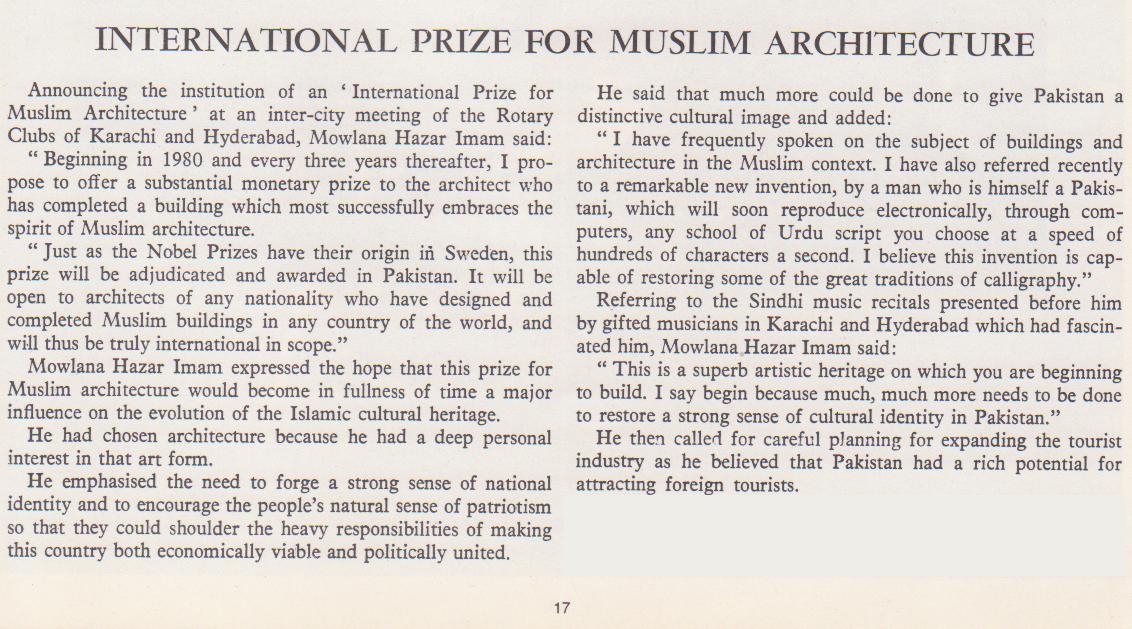
The creation of the Aga Khan Award for Architecture was first announced by His Highness the Aga Khan, the 49th and current Ismaili Imam, during his visit to Pakistan in 1976, at a joint meeting of the Karachi-Hyderabad Rotary Clubs. During the visit the Aga Khan also spoke at other functions concerning the state of Islamic architecture as well as urged the encouragement for the pursuit of arts in the country.
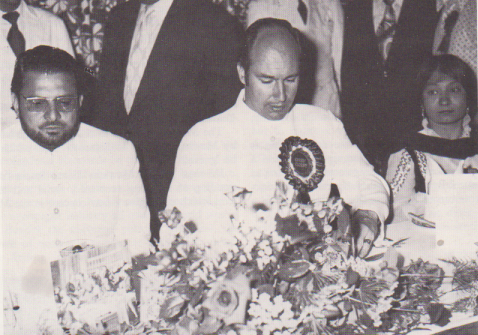
In comments made at a luncheon function organized the National Council of Culture and Arts at the Beach Luxury Hotel, Karachi, on February 24, 1976, the Aga Khan said:
“No art form in the Muslim World has suffered from the insidious influence of alien cultures as much as architecture. Yet it was only a few hundred years ago – a fragment of time in the great span of human history – that architecture became the greatest of Islamic cultural art forms. I fear the day when Islam will be our faith yet its outward manifestation in the buildings we work and live in, the paintings and works of art we behold and the music we listen to will be dominated by foreign cultures which have their roots neither in our spiritual beliefs nor in our great artistic heritage.
“In saying this, I am not advocating a narrow or chauvinistic approach to the nation’s artistic development, nor is this a question of simply copying the forms of the past. Islamic art has always thrived on a liberal adaptation of contemporary influences and, at its greatest, was neither restrictive nor insular.
“How then are we to answer to future generations who will grow up asking themselves why it is that the genius of Islamic architecture has left behind only timeworn historical monuments, monuments to a past that is gone forever and without relation to the living present?
“Hundreds and thousands of new buildings are now being constructed in Muslim countries in the wake of the great oil boom. How many of their designers have seriously studied or taken account of the spirit of Muslim architecture and adapted to modern functional requirements.”
After significant preparations over the ensuing 3 years, which included seminars in France, Indonesia, Turkey and Jordan, the first Aga Khan Award ceremony took place in 1980 in a magical setting at Lahore’s Shalimar Gardens.
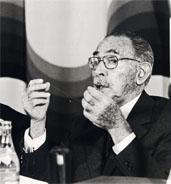
Late Egyptian architect Hassan Fathy was recognized with the Chairman’s Award in 1980 in Lahore. Photo: http://www.rightlivelihood.org
POINT TO PONDER
by Hassan Fathy
“Once I was invited to the house of a friend in Long Island, and they asked me to talk about what I saw. I said; “Look at the view you have with the trees and the water behind. The tree is wiser than man, because every leaf is placed where it can take the sun, the wind and everything else. And when I think of New York where you have simply put people on top of one another, the tree is wiser.”
EARLY TRIBUTES TO THE AGA KHAN ON ESTABLISHING THE AWARD FOR ARCHITECTURE
| “. . . When I was initially informed about this seminar, two things intrigued me: the name of the Award and its famous benefactor, and the title of the seminar. To many of us in Southeast Asia, the prominent name of His Highness The Aga Khan has been associated primarily with the man who is the most distinguished leader of the Ismaili community. Now, with great admiration and appreciation, we may also think of him as an industrious patron of world culture. The establishment of the Aga Khan Award for Architecture is a noble and righteous venture. It is part of a Foundation that aims to encourage the best possible designs in architecture and building, in the broadest sense. May Allah return such a noble gesture with His rahemat and hidayat to His Highness and his family.” (Opening remarks by Dr. Purnomosidi Hadjisaroso, Minister of Public Works, Indonesia, Seminar, Jakarta, March 26-29, 1979). |
| “I wish to join Dr. Hadjisaroso in expressing my appreciation and admiration of His Highness the Aga Khan as the world’s most distinguished patron and benefactor of Islamic culture, and of Islamic architecture in particular! The stimulus which His Highness has catalyzed with the Aga Khan Award for Architecture is of great significance in attracting the highest skills and the brightest minds to help solve this immense problem”. (Adam Malik, Vice President of the Republic of Indonesia) |
| “I transmit to you the warm greetings of the Director General of UNESCO, Mr. Amadou Mahtar M’Bow; he extends his best wishes for a fruitful and successful meeting whose objectives coincide fully with UNESCO’s own ideals. May I once again express UNESCO’s deep appreciation to Your Highness for the timely inception of the Award. This noble endeavour to encourage imaginative projects related to the cultural and social environment will contribute greatly to the rehabilitation of the Islamic architectural heritage. For this UNESCO is sincerely grateful, as are, I am sure, all those present today.” (Said Zulfikar of UNESCO, Seminar, Istanbul, Turkey, September 26 – 28, 1978). |
| “The guidance which His Highness is giving to the aesthetic and practical aspects of Islamic architecture is in every way worthy of the widespread support and interest it is receiving, and the understanding it deserves. I have closely followed the work of the Aga Khan Award, as it was relayed to me by my brother the Crown Prince. In this first year of the fifteenth century of the hijra I feel that the impact of this Award is of special significance. With these opening remarks let me wish the seminar success. The able chairmanship of His Highness The Aga Khan and the very fact of the Aga Khan Award for Architecture truly embodies a respect for art, for tradition and for the task of preserving and creating beauty in our lives.” (Opening remarks by the late King Hussein of Jordan, Seminar, Amman, May 4 -7, 1980) |
WHERE THE AWARD CEREMONIES HAVE BEEN HELD
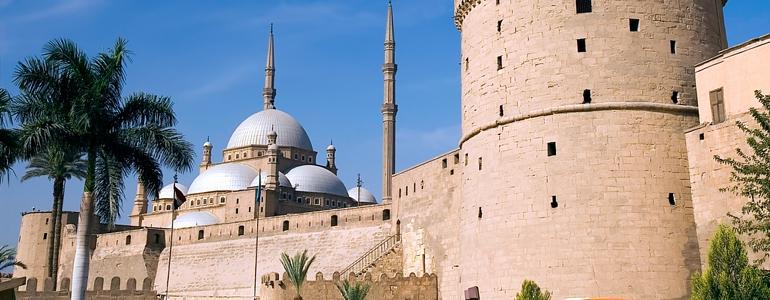
FORTHCOMING:
Eleventh Cycle: 2010, Museum of Islamic Art, Doha, Qatar
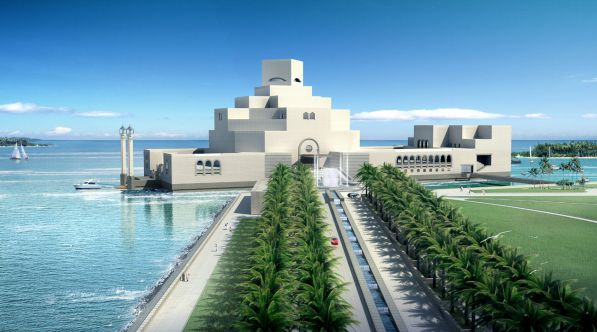
This week’s ceremony, on November 24th, at the Museum of Islamic Art in Doha, Qatar, will be the 11th in the cycle of what has come to be regarded as the world’s most prestigious architecture award program.
The Doha museum was designed by 91 year old Chinese American architect Leoh Min Pei (more commonly known as I. M. Pei), who was coaxed out of retirement to undertake the work of designing a museum that would embody the essence of Islamic architecture.
“Islam was one religion I did not know,” Pei is quoted as saying in a New York Times article. “So I studied the life of Muhammad. I went to Egypt and Tunisia. I became very interested in the architecture of defense, in fortifications. It is a very important piece of Islamic architecture.”
In another interview, this time with journalist Philip Jodidio, Pei explained the circumstances under which he became involved in the project to design the Islamic Art museum in Doha. “I believe that the Aga Khan organized a competition [1998] from which two architects emerged. The first choice of the jury was Charles Correa and the second choice was a Lebanese architect called Rasem Badran. Badran was selected by the state of Qatar to build the museum on the Corniche [a 7 kilometre palm fringed waterfront promenade]. His project unfortunately did not go forward, and I was contacted by Luis Monreal, who had been a member of the original [Aga Khan Awards] jury.”
Pei went on to add, “Mr. Monreal, now General Manager of the Aga Khan Trust for Culture, knew that I did not participate in competitions, but he persuaded the Emir that I might be a good choice to design the new museum. I was offered a number of sites along the Corniche including the originally planned location, but I did not accept these options. There were not yet too many buildings nearby, but I feared that in the future large structures might rise that would overshadow it, and I asked if it might be possible to create my own site. This was very selfish of me of course, but I knew that in Qatar it is not too complicated to create a landfill.”
The striking museum, which opened in December 2008, rises magnificently from Doha’s shimmering harbour and has emerged as one of the world’s most encyclopedic collections of Islamic art. It has an Islamic art collection to rival any in the world, a fact not lost on its British director, Dr. Oliver Watson: “To have the chance to serve in a brand new museum, a brand new building of this importance and this splendour with a collection of this quality is something that very few people have the opportunity (to do) in a lifetime.”
The Award ceremony this week promises to be as exciting and memorable as the inauguration event in Lahore exactly thirty years ago.
Article publication date: November 21, 2010.
Updated: November 22, 2010.
© Simerg.com
____________
‘Point to ponder’ quote by Hassan Fathy, reproduced from Seminar proceedings, Aiglemont, April 19, 1978. Fathy received the special Chairman’s award from His Highness the Aga Khan during the 1980 Award ceremonies in Lahore, Pakistan.
Please click Another Shalimar, a poetic tribute by Shamas Nanji to the Aga Khan Award.
Please visit the Simerg Home page for links to articles posted most recently. For links to articles posted on this Web site since its launch in March 2009, please click What’s New. Please sign-up for blog subscription at top right of this page.
Leading up to the Awards ceremony later this week, we recommend the following links:
A 2001/2 Interview with the Aga Khan by Richard Ivy of the Architectural Record
A slide show at Architectural Record of 19 projects shortlisted for 2010 Awards.
Aga Khan Award for Architecture for project descriptions
Watch the BBC special 3 part series – Architects on the Frontline. The dates and times are as follows (EST, North America):
1. November 21, 2010 (08:30, 12:30)
This countdown to the Awards will feature eight of the nineteen projects shortlisted for the 2010 Aga Khan Award for Architecture.
2. November 27, 2010 (02:30, 15:30) and November 28 (08:30, 12:30)
This program will feature the remaining eleven projects shortlisted for the 2010 Award.
3. December 4, 2010 (02:30, 15:30) and December 5 (08:30, 12:30)
This will reveal the winners of the 2010 Aga Khan Award for Architecture. The glittering prize Award ceremony will be in Doha, Qatar.
To verify the above BBC broadcast times in your respective area, please click BBC Schedules and check the timings for “Architects on the Frontline.”

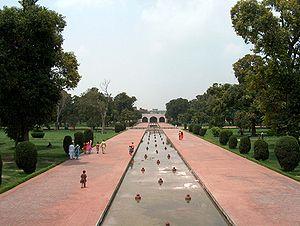
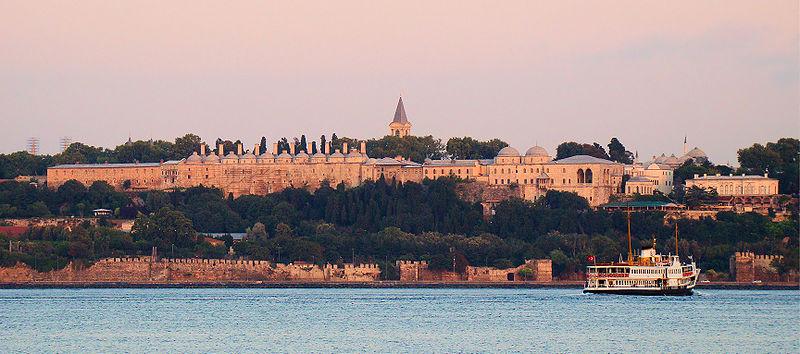
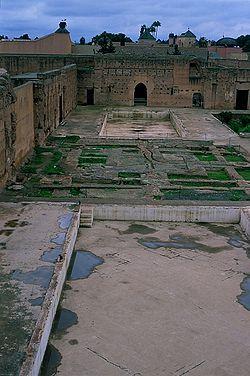

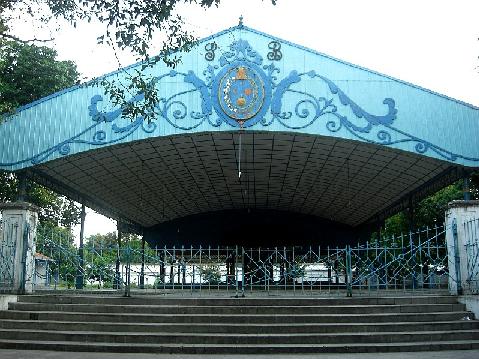
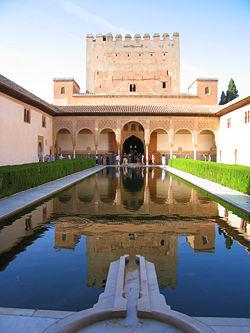
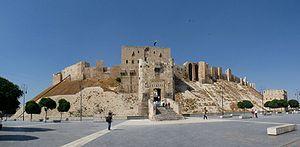
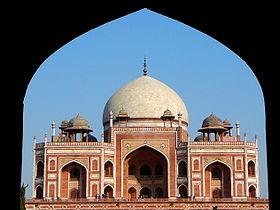

Very nice and God bless you.
Wonderful information.